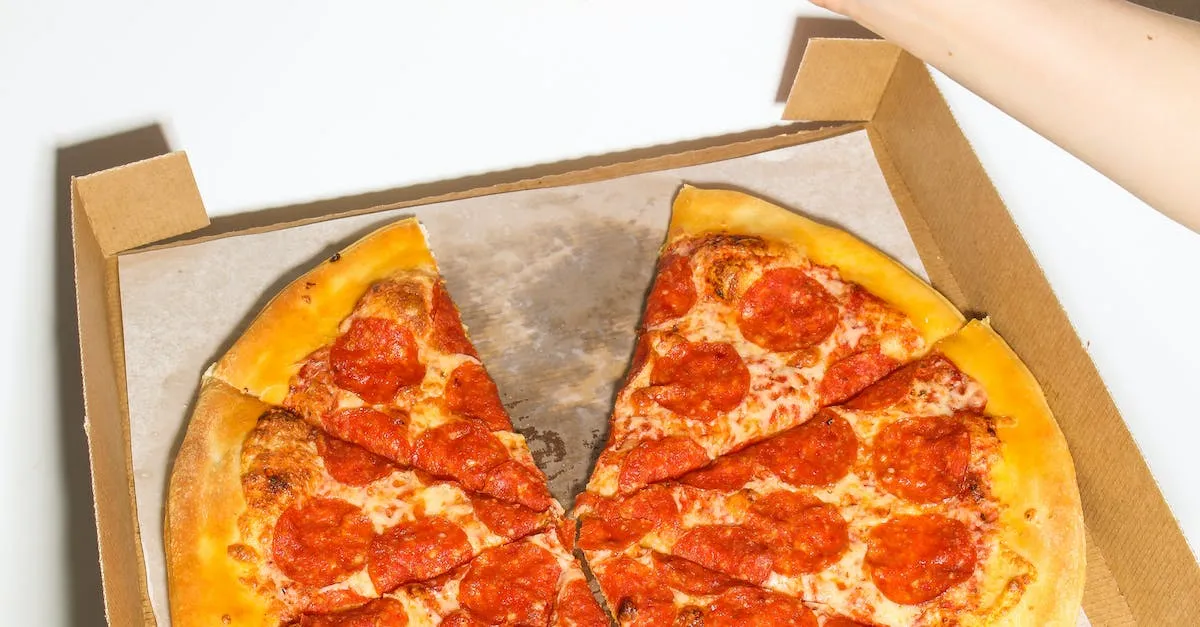Is New York Style Pizza Thin? A Detailed Look
New York style pizza is one of the most iconic and beloved regional pizza styles in the United States. With its large, foldable slices, crisp crust, and minimalist toppings, New York pizza has developed an almost cult-like following over the years. But when it comes to the thickness of the crust, there seems to be some debate. If you’re wondering whether New York style pizza is thin or not, read on for a deep dive into this delicious regional specialty.
If you’re short on time, here’s a quick answer: New York style pizza tends to have a thin, crisp crust that is foldable yet sturdy enough to support sparse, well-balanced toppings.
The History and Origins of New York Style Pizza
When it comes to iconic food items, New York style pizza is certainly at the top of the list. But have you ever wondered about the history and origins of this beloved pizza style? Let’s take a closer look.
New York pizza evolved from Neapolitan pizza brought by Italian immigrants
The roots of New York style pizza can be traced back to the late 19th and early 20th centuries when Italian immigrants began arriving in New York City. These immigrants brought with them the traditional Neapolitan style pizza, which was characterized by a thin and crispy crust topped with simple, high-quality ingredients.
Over time, these Italian immigrants began adapting their pizza to suit the tastes of their new American customers. The result was a unique style of pizza that combined the techniques of Neapolitan pizza with the flavors and ingredients readily available in New York City.
Coal oven baking led to a thinner, crispier crust
One of the defining characteristics of New York style pizza is its thin and crispy crust. This can be attributed to the use of coal ovens, which were commonly used by early pizzerias in New York City. The intense heat generated by these ovens allowed the dough to cook quickly, resulting in a thin and crispy crust.
Unlike other pizza styles that are known for their thick and doughy crusts, New York style pizza has a crust that is both sturdy enough to hold the toppings and light enough to be folded in half for easy consumption on the go.
The New York water minerals also affect the dough
Believe it or not, the water used to make the dough for New York style pizza plays a crucial role in its unique flavor and texture. The tap water in New York City is known for its high mineral content, which includes calcium, magnesium, and potassium.
These minerals interact with the dough during the fermentation process, resulting in a distinct flavor and texture that is specific to New York style pizza. Many experts believe that the water in New York City is one of the key factors that sets its pizza apart from other styles found around the world.
In fact, several pizzerias outside of New York City have even gone to great lengths to replicate the New York City water in order to recreate the authentic taste of New York style pizza.
For more information on the history and origins of New York style pizza, you can visit Pizza Today or Serious Eats.
Defining Characteristics of New York Style Pizza
Large, thin slices with foldable crust
New York Style Pizza is known for its large, thin slices that are easily foldable. The crust is thin and slightly chewy, providing the perfect balance between crispy and doughy. This style of pizza is often served in huge slices which are perfect for on-the-go eating.
It’s not uncommon to see locals and tourists alike walking down the streets of New York City, holding a slice of pizza in one hand and folding it in half to take a bite. The thinness of the crust allows for a satisfying crunch while still maintaining a light and airy texture.
Crisp bottom with some charring
The bottom of a New York Style Pizza is crisp and slightly charred, adding a delicious smoky flavor to each bite. This is achieved by baking the pizza in a hot oven, typically on a stone or a well-seasoned pizza pan.
The high heat creates a crispy crust while the charring adds a hint of complexity to the overall flavor profile. The combination of the crisp bottom and the foldable crust makes for a truly unique and enjoyable eating experience.
Minimal toppings like cheese and tomato sauce
New York Style Pizza is known for its minimal toppings, typically consisting of just cheese and tomato sauce. The focus is on the quality of the ingredients rather than the quantity. The cheese is often a blend of mozzarella and a sprinkle of Parmesan, creating a gooey and flavorful topping.
The tomato sauce is made from fresh tomatoes, herbs, and spices, providing a tangy and savory contrast to the cheese. This simplicity allows the flavors of the crust, cheese, and sauce to shine through and creates a harmonious balance of flavors.
How Thick is the Crust of New York Pizza?
New York style pizza is known for its iconic thin crust that is both crispy and chewy. The thickness of the crust plays a crucial role in achieving the perfect balance of texture and flavor. Let’s take a closer look at just how thick the crust of a New York pizza typically is.
Thinner than a traditional Neapolitan pizza
Compared to a traditional Neapolitan pizza, which is known for its thin and soft crust, New York style pizza is slightly thicker. Neapolitan pizza is stretched to a very thin crust, sometimes as thin as a few millimeters, while New York style pizza has a slightly thicker base.
Not as thin as crispy Roman-style pizza
On the other hand, New York style pizza is not as thin as the crispy Roman-style pizza. Roman-style pizza, also known as “pizza al taglio,” is characterized by its ultra-thin and cracker-like crust. In contrast, New York style pizza strikes a balance between the thinness of Neapolitan pizza and the crispiness of Roman-style pizza.
About 1/4 to 1/2 inch thick
The crust of a New York style pizza typically ranges from about 1/4 to 1/2 inch thick. This thickness allows for a sturdy base that can hold the toppings without becoming soggy. It also provides a substantial bite and a satisfying chewiness that is beloved by pizza enthusiasts.
Sturdy enough to support toppings without sogginess
One of the defining characteristics of New York style pizza is its ability to hold a wide variety of toppings without becoming soggy. The thickness of the crust plays a crucial role in providing the necessary support for the toppings.
The sturdiness of the crust allows for a generous amount of cheese, sauce, and other toppings without compromising the overall structural integrity of the pizza.
What Makes the Crust Thin?
When it comes to New York style pizza, one of its defining characteristics is its thin crust. But what exactly makes the crust thin? Let’s take a detailed look at the key factors:
High-gluten bread flour allows dough to stretch thin
A crucial ingredient in creating a thin crust is high-gluten bread flour. This type of flour has a higher protein content, which gives the dough its elasticity and allows it to stretch thin without tearing.
The gluten in the flour forms a network of proteins that give the crust its structure and chewiness. By using high-gluten bread flour, pizza makers are able to achieve that perfect balance of thinness and texture.
Hand tossing and gravity helps spread dough thin
The art of hand tossing is another technique that contributes to the thinness of New York style pizza crust. By tossing the dough in the air, pizza makers are able to stretch it out and create a larger surface area.
As the dough spins through the air, gravity helps to stretch it even further, resulting in a thinner crust. This method requires skill and practice, but it’s what gives New York style pizza its characteristic thin and crispy crust.
Baking on hot oven decks results in a thin profile
Another factor that contributes to the thin crust of New York style pizza is the way it is baked. Traditional New York pizzerias often use brick or deck ovens that are heated to high temperatures. These ovens have hot decks or stone surfaces that quickly cook the dough, resulting in a thin and crispy crust.
The intense heat of the oven also helps to create a slightly charred and blistered exterior, adding to the overall flavor and texture of the pizza.
Minimal proofing time limits dough rise
Unlike other styles of pizza that require a longer proofing time, New York style pizza dough is typically given minimal time to rise. This limited proofing time prevents the dough from developing too much air and becoming too puffy.
Instead, the dough retains its thin profile and allows the ingredients on top to shine. The shorter proofing time also contributes to the quick cooking time in the hot oven, resulting in a thin and crispy crust.
By understanding the key factors that contribute to the thinness of New York style pizza crust, you can appreciate the craftsmanship and skill that goes into creating this iconic style of pizza. So next time you take a bite of a slice, remember the high-gluten bread flour, the art of hand tossing, the heat of the oven, and the minimal proofing time that all work together to deliver that deliciously thin crust.
Regional Variations in Thickness
New York style pizza is famous for its thin and crispy crust, but there are variations in thickness depending on the region. Let’s take a closer look at two popular styles of New York pizza and their differing crust thicknesses.
Brooklyn style tends to be thinner
Brooklyn style pizza is known for its incredibly thin crust. It is often hand-tossed and stretched until it becomes paper-thin. This style of pizza is typically cooked in a high-heat oven, resulting in a crispy crust that is slightly charred on the edges.
The thinness of the crust allows the flavors of the sauce, cheese, and toppings to shine through, creating a perfect balance of flavors.
Brooklyn style pizza has gained popularity not only in New York but also across the United States. Its unique thinness and crispiness have made it a favorite among pizza lovers who enjoy a lighter and more delicate pizza experience.
So, if you’re looking for a pizza that is as thin as a wafer, Brooklyn style is the way to go!
Upstate NY can have a slightly thicker crust
While Brooklyn style pizza is known for its ultra-thin crust, upstate New York tends to have a slightly thicker crust. This variation in thickness is a result of the different pizza-making traditions found in this region.
Upstate NY pizza often has a doughier and chewier crust compared to its Brooklyn counterpart.
The slightly thicker crust in upstate NY pizza provides a satisfying bite and a more substantial base for the toppings. It still maintains the characteristic New York style, with a foldable slice and a delicious combination of flavors.
Whether you prefer a thinner or slightly thicker crust, both styles offer a unique and delicious pizza experience.
It’s important to note that these variations in crust thickness are not set in stone. Different pizzerias within these regions may have their own interpretations and preferences when it comes to the thickness of their pizza crusts.
So, don’t be afraid to explore and try different pizzerias to find the perfect New York style pizza that suits your taste!
Conclusion
While there are some minor regional differences, traditional New York-style pizza is known for its thin, foldable crust that provides a sturdy base for cheese, tomato sauce, and other sparse toppings. The crust is crisp on the bottom with some charring, yet pliable enough to fold a steaming hot slice to eat by hand. This ideal balance of crispness and pliability comes from the dough ingredients, stretching method, and high-temperature oven baking that characterizes New York’s signature pizza style.








